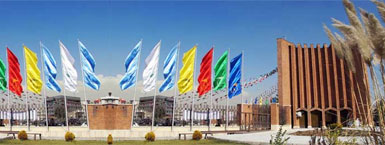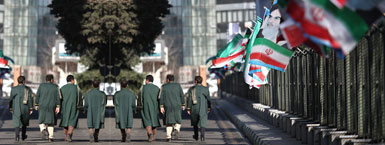Aerospace
IntroductionAerospace department is situated in Mechanical Engineering Faculty and its mission concerns the education of specialized workforce and the accomplishment of national progress in the areas of science and technology. The activity of this department goes back to 1995 when it was started admitting master students in aerospace. At that time, the department had just one faculty member (Dr. Fatollah Ommi). With the expansion of graduate studies, the department began its doctorate programs in 2010. More than 171 alumni in master and 5 in Ph.D. have graduated from this department so far. At the moment, teaching staff of the department consists of 7 full-time members and students body consists of 54 master and 36 doctorate students. Mission and Vision of Aerospace DepartmentAerospace engineering can be truly called one of the most comprehensive fields of engineering. Huge budgets spent in military and non-military sectors have contributed to rapid progresses in this field. It is a strategic science which utilizes other fields of study such as mechanics, metallurgy, computer sciences, civil engineering and electronics. Aerospace has five main branches as listed below: AerodynamicsThis sub-discipline which is one of the major fields of aerospace engineering studies fluid flow around objects. Specifically aerodynamics concerning the flow of air over bodies such as wings or through objects such as wind tunnels. By estimating aerodynamic forces, aerospace engineers can perform engineering duties in designing, constructing, and testing aircraft, missiles, and spacecraft. May conduct basic and applied research to evaluate adaptability of materials and equipment to aircraft design and manufacture. PropulsionPropulsion is concerned with the study of the energy to operate air-breathing combustion engines and pneumatic motors. Combustion engines use the oxygen in atmospheric air to oxidize the fuel, as in a rocket. This field is interested in the study of engines or motors as the power source and wheels and axles, propellers to generate the force. Design and calculation of different motors is of primary interest for propulsion engineers. This field of study shares many courses with mechanics (energy conversion and energy engineering). The graduates of this field find more job opportunities compared with aerospace engineers (they can be hired by oil companies, car factories, defense sector or power plants to name a few). Many students of this department are engaged in numerical simulation of fluid behavior. Flight & Control DynamicsFlight dynamics is the study of the performance, stability, and control of vehicles flying through the air or in outer space. It is concerned with how forces acting on the vehicle influence its speed and attitude with respect to time. The specialists of this field are concerned with the design of all sorts of aircrafts (manned or drone), helicopters?.. The students of this sub-discipline can also choose optional courses like ?flight simulation?, ?avionics? or ?guidance and navigation?. Depending on the type of optional courses that the students have taken during their education, they can be employed in the following areas:
Aircraft StructuresThe main mission of this field concerns the design of the physical configuration of the craft to withstand the forces encountered during flight. It aims to keep structures lightweight and low-cost, while maintaining structural integrity. In addition to their basic courses such as mechanics of continuous environments and element theory, the students can also take some optional courses like random vibration and aero elasticity. Depending on the type of optional courses that the students have taken during their education, they can be employed in the following areas:
Since aircrafts enjoy a high-tech technology in their design and structures, the graduates of this field can easily find work in other industrial areas such as car or ship manufacturing plants. |




